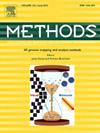Recent advances in biosensors: structure, principles, classification, and application in bio-manufacturing
IF 4.3
3区 生物学
Q1 BIOCHEMICAL RESEARCH METHODS
引用次数: 0
Abstract
Bio-manufacturing, as a frontier field of the new round of global scientific and technological revolution and industrial change, is becoming a core driving force for the future development of the bioeconomy. However, the bio-manufacturing process itself contains complex metabolic mechanisms and fine process control, which undoubtedly increases its technical difficulty. Especially at a time when the field of intelligent bio-manufacturing is developing rapidly, more stringent requirements have been placed on the ability to sense key biochemical information during the bio-manufacturing process. Biosensors based on biomolecular recognition provide powerful technical support for real time monitoring and precise control of key biochemical information that can rapidly sense the production process, and their applications have made remarkable progress. This article reviews the structure, classification, and working principle of biosensors and discusses their applications in bio-manufacturing, such as real-time monitoring of key biochemical parameters, intracellular and extracellular metabolite concentrations, and high-throughput screening for precise control and optimization of bioprocesses. The article also analyses the challenges facing biosensors, including the need for stability and reliability enhancements, and future directions. Researchers are developing new biometric components and sensor materials with advanced signal conversion techniques, while microelectronics and nanotechnology are driving the miniaturization and integration of sensors. These advances are expected to make biosensors more useful in microbial fermentation and biotechnology.
生物传感器的研究进展:结构、原理、分类及其在生物制造中的应用。
生物制造作为全球新一轮科技革命和产业变革的前沿领域,正在成为推动生物经济未来发展的核心动力。然而,生物制造过程本身包含复杂的代谢机制和精细的过程控制,这无疑增加了其技术难度。特别是在智能生物制造领域迅速发展的今天,对生物制造过程中关键生化信息的感知能力提出了更严格的要求。基于生物分子识别的生物传感器为实时监测和精确控制能够快速感知生产过程的关键生化信息提供了强有力的技术支持,其应用取得了显著进展。本文综述了生物传感器的结构、分类和工作原理,并讨论了它们在生物制造中的应用,如实时监测关键生化参数、细胞内和细胞外代谢物浓度、高通量筛选以精确控制和优化生物过程。文章还分析了生物传感器面临的挑战,包括对稳定性和可靠性增强的需求,以及未来的发展方向。研究人员正在开发具有先进信号转换技术的新型生物识别元件和传感器材料,而微电子和纳米技术正在推动传感器的小型化和集成化。这些进展有望使生物传感器在微生物发酵和生物技术方面发挥更大的作用。
本文章由计算机程序翻译,如有差异,请以英文原文为准。
求助全文
约1分钟内获得全文
求助全文
来源期刊

Methods
生物-生化研究方法
CiteScore
9.80
自引率
2.10%
发文量
222
审稿时长
11.3 weeks
期刊介绍:
Methods focuses on rapidly developing techniques in the experimental biological and medical sciences.
Each topical issue, organized by a guest editor who is an expert in the area covered, consists solely of invited quality articles by specialist authors, many of them reviews. Issues are devoted to specific technical approaches with emphasis on clear detailed descriptions of protocols that allow them to be reproduced easily. The background information provided enables researchers to understand the principles underlying the methods; other helpful sections include comparisons of alternative methods giving the advantages and disadvantages of particular methods, guidance on avoiding potential pitfalls, and suggestions for troubleshooting.
 求助内容:
求助内容: 应助结果提醒方式:
应助结果提醒方式:


